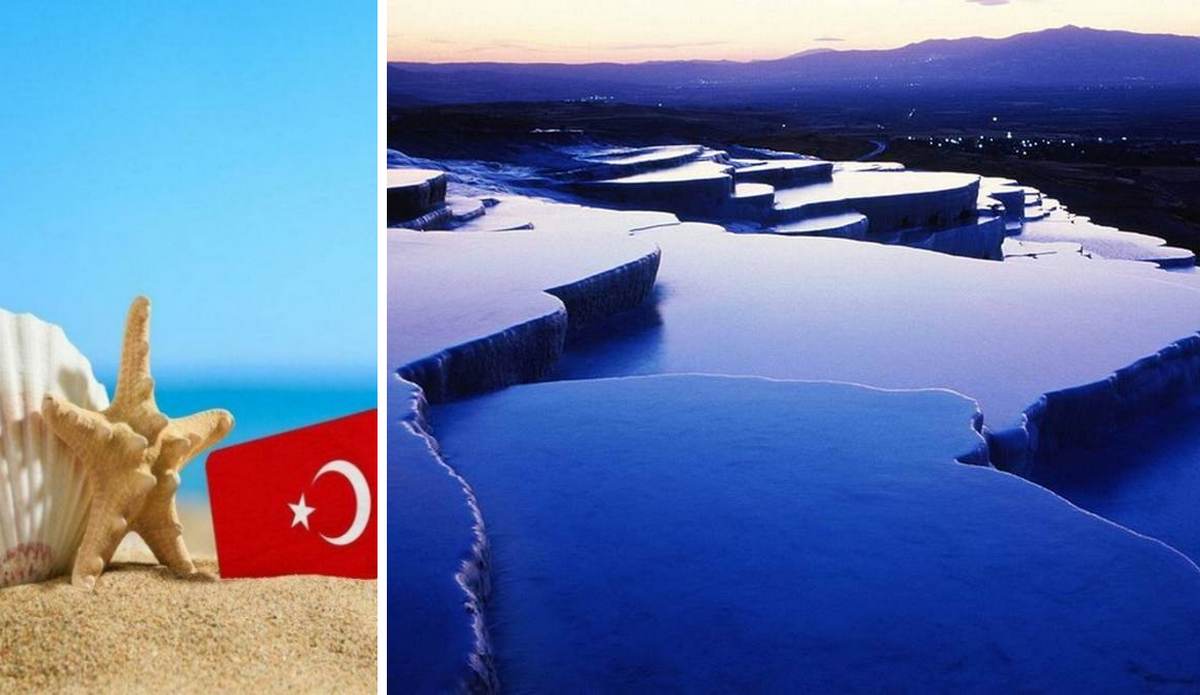Perhaps, after the earthquake, Turkey will be left without its famous resort – at least this is how he commented on his blog about the latest news from “journalists and travel bloggers” that the thermal pools of Pammukale have “suspiciously dried up”. In addition to the earthquake, however, he named another reason for the “shallowing” of the resort.
More precisely, at first, he reminded me that Pamukkale is known all over the world for its thermal pools and travertine terraces. “Thanks to them, in 1988 it was even included in the UNESCO World Heritage List. Travertine is a special form of limestone that appears under the influence of the water from thermal springs, in which various minerals, primarily calcium, are dissolved,” the blogger clarified. He also reminded in detail that these springs had been known since ancient times, the ancient Greek, and then the Byzantine city of Hierapolis once existed here, where there were also many thermal baths – baths built directly above the springs.
“Nowadays, Pamukkale is a trendy place among tourists from all over the world. Its attendance dropped only briefly due to quarantine measures due to the coronavirus pandemic. In the first half of 2021, “only” 150,000 tourists visited it for this reason. But already in the second half of the same year – 1.1 million people. In July and August 2021, 250-270 thousand Turkish and foreign tourists roamed the white travertines. For comparison: in 2020, when anti-covid restrictions were still in effect, Pamukkale was visited by a little more than 600,000 people. And in 2019, when few people had heard of covid, the number of tourists reached 2.6 million people,” the blogger calculates. And only after that, he answers the question about the “drying up” of sources.
Such a risk exists. “All of Turkey is in an earthquake-prone zone. There is an assumption that local rock formations and thermal springs arose as a result of earthquakes and tectonic shifts, when water, rich in minerals, began to burst out from under the ground,” says the blogger. More recently, he adds, there was a relatively weak magnitude 4 earthquake in September 2016. In Pammukal “there were small collapses of an ancient thermal water pool.” However, it is far from drying up – “now it is filled with fragments of ancient columns and other parts of ancient buildings. Still, at the same time it is available to everyone who wants to bathe,” the blogger says.
However, there is a risk of “drying out” of Pammukale, although the blogger gives another explanation. Tourists — and local businessmen who profit from them — are to blame, the blogger assures. “Many new hotels and guest houses were built in Pamukkale. The pools are supplied with the same water from thermal springs. Such a process has been particularly active for the past 20 years,” the blogger said. Some measures are being taken: tourists are forbidden to walk on the terraces of the pools in shoes and wash in them with detergents, and hoteliers are forbidden to build hotels in the immediate vicinity of the pools. But these measures are not enough.
“Most of the location has been completely dry for many years. On the ruins of Hierapolis excavated by archaeologists, you can also see ancient aqueducts, which used to supply water from thermal springs to local baths in ancient times. Again, it is not clear why they dried up: as a result of new earthquakes or because of too much activity?” – sums up the blogger.

